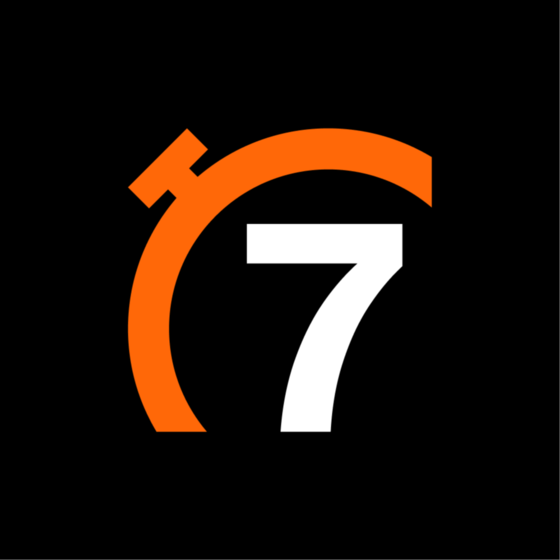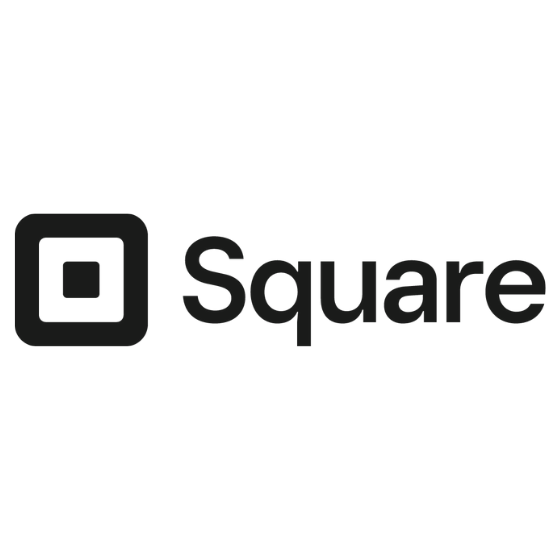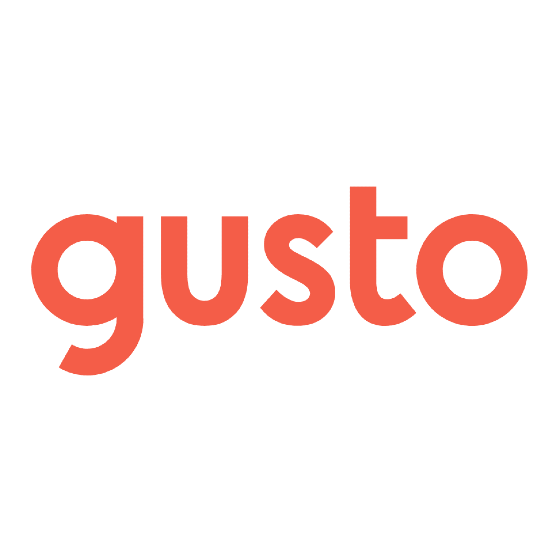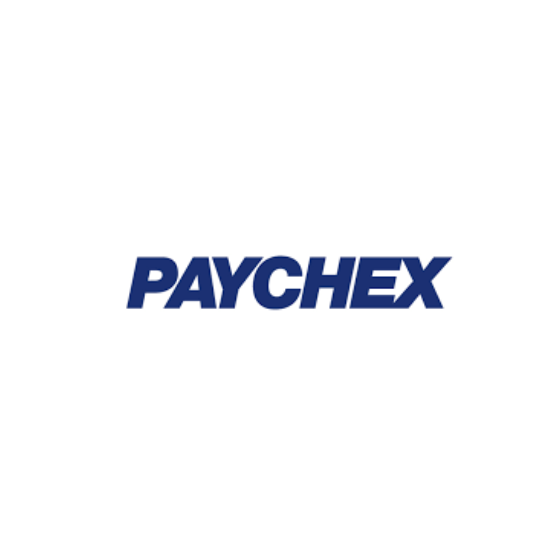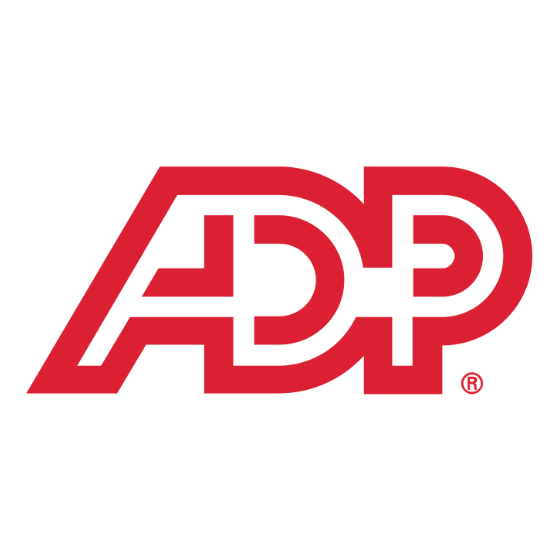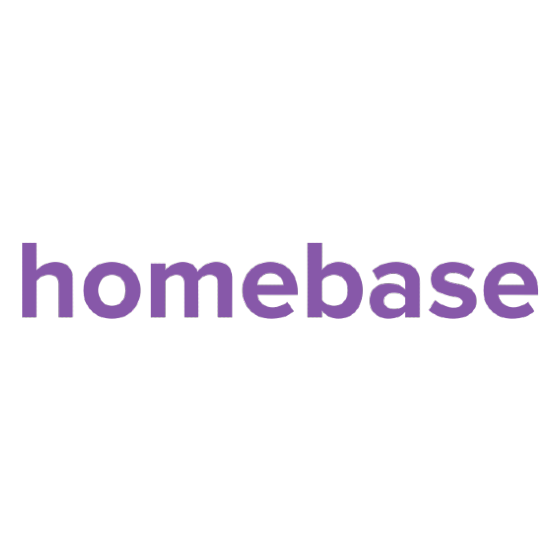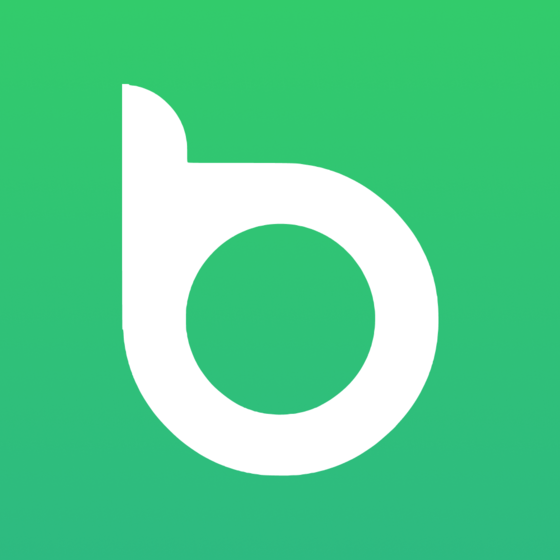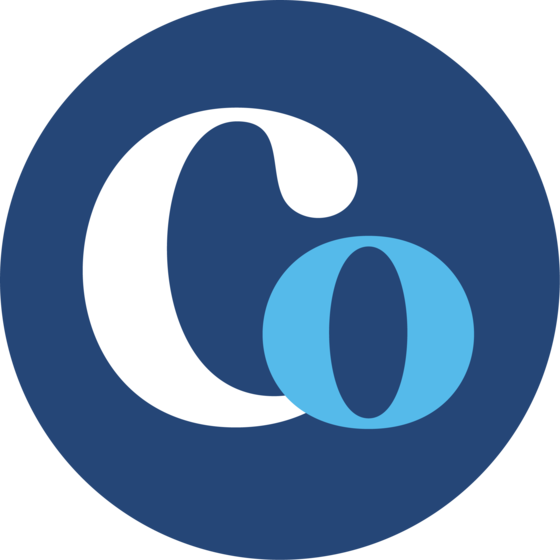Best Restaurant Payroll Software Shortlist
Here's my pick of the 10 best software from the 14 tools reviewed.
Talk through what you’re looking for. Get a custom shortlist based on your needs. No fees.
Running payroll in a restaurant isn’t like running payroll anywhere else. Between juggling hourly wages, overtime, tip pooling, split shifts, and ever-changing labor laws, it’s easy to feel overwhelmed. Maybe you're spending hours on manual calculations, worried about tax errors, or struggling to find a system that fits your fast-paced, high-turnover environment.
That’s why I’ve put together this guide, to help restaurant owners and managers like you cut through the noise to find tools that actually work. This article highlights the best restaurant payroll software that simplifies tip tracking, automates compliance, and streamlines payroll—so you can focus on running your restaurant, not running payroll.
Why Trust Our Software Reviews
We’ve been testing and reviewing HR software since 2019. As HR professionals ourselves, we know how critical and difficult it is to make the right decision when selecting software.
We’ve tested more than 2,000 tools for different HR management use cases and written over 1,000 comprehensive software reviews. Learn how we stay transparent, and take a look at our software review methodology.
Best Restaurant Payroll Software: Comparison Chart
This comparison chart summarizes pricing, trial, and demo details for my top payroll software selections for restaurant owners to help you find the best software for your budget and business needs.
| Tool | Best For | Trial Info | Price | ||
|---|---|---|---|---|---|
| 1 | Best for automatic tip calculations | 14-day free trial + free plan available | From $24.99/month/location | Website | |
| 2 | Best for POS system integration | Free demo available | From $69/month | Website | |
| 3 | Best for integrated payments | Not available | From $6/user/month + $35/month base fee | Website | |
| 4 | Best for tip reporting | Free demo available | From $40/month + $6/user/month | Website | |
| 5 | Best for custom payroll solutions | Free demo available | From $39/month + $5/employee/month | Website | |
| 6 | Best for workforce management | Free demo available | From $5/user/month (5 user minimum) | Website | |
| 7 | Best for team management | Not available | From $65/month per station + one-time setup fee | Website | |
| 8 | Best for compliance support | Free demo available | Pricing upon request | Website | |
| 9 | Best for existing QuickBooks users | 30-day free trial | From $30/user/month | Website | |
| 10 | Best for hourly workforce | Free plan available | From $20/location/month | Website |
-

edays
Visit WebsiteThis is an aggregated rating for this tool including ratings from Crozdesk users and ratings from other sites.4.3 -

Boon
Visit WebsiteThis is an aggregated rating for this tool including ratings from Crozdesk users and ratings from other sites.4.7 -

ClearCompany
Visit WebsiteThis is an aggregated rating for this tool including ratings from Crozdesk users and ratings from other sites.4.6
Best Restaurant Payroll Software Reviews
Get the inside scoop on my top restaurant payroll software picks. Below, I break down what each tool does best, where it might fall short, and which types of restaurant teams it’s built for—so you can quickly figure out what fits your needs.
7Shifts is a restaurant payroll solution designed to simplify how restaurants manage wages, tips, and payroll processes. Built for food service businesses, it integrates key payroll functions into one platform, streamlining tasks like time tracking, tip pooling, and payroll calculations.
Why I picked 7Shifts: 7Shift's payroll suite makes it easy to manage restaurant-specific needs like tip pooling and payouts. The software automatically calculates both cash and credit tips and integrates them with employee hours, ensuring accurate payroll every time. This feature eliminates the need for manual entries and reduces errors, which is particularly valuable for high-turnover industries like restaurants.
In addition, the integration with time tracking lets you pull employee hours directly into payroll, saving time and improving data accuracy.
Standout features & integrations:
Standout features include a drag-and-drop shift builder that makes organizing shifts intuitive and reduces scheduling time. It also offers time-off request management with approval tools and a mobile app for quick employee onboarding that allows new staff to get up to speed.
Integrations include ADP Workforce Now, CAKE, Toast, TouchBistro, Clover, DoorDash, Gusto, Tenzo, Paycom, Paylocity, QuickBooks, Square, and UKG Pro.
Pros and cons
Pros:
- Automated tip calculation
- Efficient scheduling process
- Compliance with labor regulations
Cons:
- Currently does not offer payroll for non-US businesses
- Integration with specific tools may require extra setup
Toast is a comprehensive restaurant management platform that streamlines operations, including payroll, and offers a seamless connection between payroll and point-of-sale data.
Why I picked Toast: I chose Toast for its robust integration capabilities with POS systems, which is essential for restaurants to manage payroll effectively. This tool stands out due to its ability to synchronize employee time tracking directly with payroll, ensuring accuracy and saving time.
I believe Toast is the best for POS system integration because it provides a unified platform that simplifies payroll processing and integrates effortlessly with the POS system, which is a critical component in the restaurant industry.
Standout features & integrations:
Standout features include simplified onboarding, streamlined payroll processing, and integrated team management. It simplifies the payroll process, allowing users to complete payroll in approximately 30 minutes or less, with some processing in under 10 minutes.
The platform also includes a mobile workflow for employee setup, direct deposit, printed checks, or pay card options for payment, and an HR Toolkit powered by Mineral for restaurant-focused HR content.
Toast integrates with QuickBooks, Xero, Gusto, ADP, Paychex, Square, Tock, 7shifts, HotSchedules, and Aloha.
Pros and cons
Pros:
- Access to a comprehensive HR toolkit for restaurant-specific needs
- Simplified employee onboarding and payroll management
- Integrated payroll processing with POS timesheet data
Cons:
- Some features may be more tailored to larger operations rather than small businesses
- The platform may have a learning curve for new users
Square Payroll is an online payroll service designed to streamline payroll processes and help restaurant owner manage payroll directly from their dashboard.
Why I picked Square Payroll:
I chose Square Payroll for this list because of its comprehensive approach to payroll management, particularly its ability to integrate with other Square products. This integration simplifies the payroll process for restaurant owners who use Square POS.
I believe Square Payroll is the best for integrated payments because of its capability to import timecards and tips directly from the Square POS system, ensuring accurate and efficient payroll runs.
Standout features & integrations:
Standout features for Square Payroll include automated tax filings, compliance support, and direct deposit options, which make payroll management easier. It also provides add-on support from certified HR experts and pay-as-you-go workers' compensation that syncs with payroll.
Square Payroll integrates with QuickBooks Online, Square POS, Square Team App, Square Dashboard, Square Checking account, Cash App, and various health insurance, retirement, and accounting solutions.
Pros and cons
Pros:
- Flexible pricing with unlimited pay runs and no long-term contracts
- Automated tax filings and compliance support
- Integrated with Square POS for easy payroll processing
Cons:
- Some features require additional add-on purchases
- Pricing may be higher for businesses with many employees due to the per-person fee
Gusto is a payroll and HR service that offers solutions designed specifically for the restaurant industry. It streamlines the management of payroll, benefits, and HR tasks.
Why I picked Gusto: I included Gusto in this list because it directly addresses the challenges faced by the restaurant industry in payroll management. Its focus on tip reporting and compliance with wage laws distinguishes it from other payroll services.
As a result, I believe Gusto is the best for tip reporting because it offers essential tools for tracking employee time and ensuring compliance for tipped employees, which are crucial features that help restaurants process payroll efficiently.
Standout features & integrations:
Standout features include automated tax processing, direct deposit, compliance with labor laws, and a user-friendly interface, plus tools to manage the diverse payroll requirements of the restaurant industry, such as varying employee shifts, pay rates, and tip calculations.
Gusto integrates natively with various tools to enhance its payroll and HR functionalities, including QuickBooks, Xero, FreshBooks, TSheets, When I Work, Clover, Shopify, Expensify, BambooHR, and Deputy.
Pros and cons
Pros:
- Integrations with essential restaurant management software
- Compliance tools for tipped employees
- Tailored features for managing restaurant payroll
Cons:
- May require supplementary services for full HR management
- The base price does not include all features
Paychex is a comprehensive payroll and HR solution for the restaurant and hospitality industry. It delivers custom payroll solutions for businesses in this sector.
Why I picked Paychex: I chose Paychex for this list because of its specialized focus on the restaurant and hospitality industries, which often face unique payroll challenges such as high turnover rates and complex tip reporting.
Paychex stands out for its ability to create custom payroll solutions catering to these needs. I believe Paychex is the best for custom payroll solutions because it offers features that can handle the intricacies of restaurant payroll, including tax credit assistance, easy-to-use reports, and paycheck previews for employees.
Standout features & integrations:
Paychex provides features that streamline payroll and HR processes for restaurants and hospitality businesses. These include assistance with business tax credits, comprehensive reporting tools, Paycheck Pre-CheckSM for paycheck previews, and Pay-on-Demand for employee convenience.
Paychex integrates natively with a wide range of tools to provide comprehensive payroll and HR solutions, including QuickBooks, Xero, Sage, Kashoo, Infor, BambooHR, Oracle Netsuite, Workday, Kronos, and Microsoft Dynamics.
Pros and cons
Pros:
- Comprehensive reporting tools to track overtime and manage payroll
- Features like tax credit assistance and Paycheck Pre-CheckSM
- Specialized payroll solutions for the restaurant and hospitality industry
Cons:
- Complex features may require a learning curve
- Minimum seat requirement might be restrictive for smaller businesses
Push Payroll simplifies payroll and workforce management for the restaurant industry. Its comprehensive features cater to the unique needs of restaurant staff.
Why I picked Push Payroll: I selected Push Payroll for its dedicated focus on the restaurant industry, offering a specialized solution that addresses the complexities of managing a restaurant workforce.
I determined it to be the best for workforce management because it integrates payroll with time tracking and scheduling, providing a cohesive system for managing all aspects of employee administration in a restaurant setting.
Standout features & integrations:
Push Payroll excels with features such as automated payroll processing, integrated time tracking, and advanced scheduling tools. These features are designed to handle the multifaceted nature of restaurant payroll, including tip calculations and compliance with labor laws.
Push Payroll integrates natively with various tools to streamline business processes, including QuickBooks, Xero, Sage, TSheets, Deputy, BambooHR, Clover, Square, Gusto, and ADP.
Pros and cons
Pros:
- Advanced scheduling tools
- Integrated time tracking
- Automated payroll processing
Cons:
- Limited to the restaurant industry sector
- Minimum of 5 seats required
SpotOn Teamwork is a comprehensive labor management solution for restaurants. It streamlines payroll processes, ensuring accuracy and compliance with labor laws.
Why I picked SpotOn Teamwork: I chose SpotOn Teamwork for its robust feature set tailored to the restaurant industry. Its integration with point-of-sale systems and automated payroll processes make it stand out from other payroll software.
I believe SpotOn Teamwork is the best for team management because it simplifies payroll, includes powerful scheduling and tip management features, and provides a holistic approach to managing restaurant staff.
Standout features & integrations:
Standout features include automated payroll preparation, POS integration, labor compliance, earning visibility, and customizable payroll options. It bridges the gap between payroll and POS systems, ensuring data accuracy and compliance with federal and state laws.
The software also allows staff to view their current and past earnings, fostering transparency and trust.
SpotOn Teamwork integrates with top point-of-sale systems, allowing for the automatic syncing of tips, wages, time clocks, and sales data including QuickBooks, Xero, Gusto, ADP Workforce Now, BambooHR, Zenefits, Paylocity, Paycom, Paychex, and Rippling.
Pros and cons
Pros:
- Customizable payroll options cater to the specific needs of restaurants
- POS integration ensures data accuracy and up-to-date information
- Automated payroll preparation saves time and reduces errors
Cons:
- A one-time setup fee is required in addition to the monthly rate
- Limited customization features
ADP simplifies payroll and human resources tasks for restaurants. It excels in compliance support with tools designed for industry-specific regulations.
Why I picked ADP: I selected ADP for its reputation and specialized offerings for the restaurant sector. Its focus on compliance sets it apart, ensuring restaurants can adhere to complex regulations.
I judge ADP to be the best for compliance support because it equips businesses with the necessary resources to manage labor laws, wage rules, and tax obligations effectively.
Standout features & integrations:
ADP offers several useful features such as integration with point-of-sale systems, management of various job roles and pay rates, and detailed labor cost insights. It also provides flexible payment methods, including Wisely by ADP, and integrates with leading accounting and HR systems.
ADP integrates natively with a broad range of tools to enhance its payroll and HR capabilities, including QuickBooks, Xero, Wave, Workday, Microsoft Dynamics, Oracle NetSuite, SAP, Salesforce, Slack, and TSheets.
Pros and cons
Pros:
- Offers flexible employee payment options, including Wisely by ADP
- Integrates with leading POS and accounting software
- Tailored compliance support for the restaurant industry
Cons:
- The extensive range of features may be daunting for those seeking simplicity
- Potentially higher costs for smaller establishments
- Lack of transparent pricing information on the website
QuickBooks Payroll provides a payroll solution specifically for the hospitality industry. It offers a cohesive experience with QuickBooks accounting software, allowing for streamlined financial management.
Why I picked QuickBooks Payroll: I selected QuickBooks Payroll due to its comprehensive features, strong industry reputation, and hospitality-focused capabilities. I judge it to be the best for existing QuickBooks users because of its integration with QuickBooks accounting, which simplifies financial tasks for those already using QuickBooks.
Standout features & integrations:
QuickBooks Payroll boasts features like tax penalty protection, same-day direct deposit, and HR support. It also provides a workforce portal and time tracking, crucial for managing a hospitality workforce.
QuickBooks Payroll integrates natively with QuickBooks Online, QuickBooks Desktop, QuickBooks Time, SimplyInsured, Next, and other QuickBooks services.
Pros and cons
Pros:
- Same-day direct deposit is available
- Full-service payroll with tax penalty protection
- Direct integration with QuickBooks accounting
Cons:
- Lack of integrations outside the QuickBooks ecosystem
- Customer support can be slow to respond
Homebase is a payroll and scheduling platform ideal for managing an hourly workforce. It simplifies the complexities of payroll for hourly employees.
Why I picked Homebase: I selected Homebase because it effectively addresses the challenges of managing an hourly workforce. Its focus on simplifying time tracking and payroll for hourly employees makes it a valuable tool.
I believe Homebase is the best for paying an hourly workforce due to its specialized features that cater to the nuanced needs of managing such employees, ensuring accurate pay and compliance.
Standout features & integrations:
Homebase’s standout features include time tracking, employee scheduling, and compliance with labor laws. It offers tools for team communication, hiring, onboarding, and managing time-off requests.
Homebase integrates natively with various tools to enhance its payroll and scheduling functionalities, including QuickBooks, Gusto, Square, Clover, Xero, ADP, Lightspeed, Revel, Shopify, and Toast.
Pros and cons
Pros:
- No implementation fees and free setup
- Compliance with city, state, and federal labor laws
- Automated time tracking and payroll integration
Cons:
- Requires the same EIN for multiple location payroll runs
- Limited to US-based businesses
Other Restaurant Payroll Software To Consider
Below is a list of additional restaurant payroll software that didn’t make it into my top 10 list but are still worth checking out:
- OnPay
For small business payroll
- Restaurant365
For restaurant operations
- Wave
For free accounting integration
- Payworks
For franchise payroll management
Related HR Software Reviews
If you still haven't found what you're looking for here, check out these other related tools that we've tested and evaluated:
- HR Software
- Payroll Software
- Recruiting Software
- Employer of Record Services
- Applicant Tracking Systems
- Workforce Management Software
Selection Criteria for Restaurant Payroll Software
Selecting the best restaurant payroll software for this list required an understanding of the specific features, functionalities, and use cases that are critical for the unique needs of the hospitality industry, including common pain points like compliance with labor laws, tip allocation, and shift differentials.
Having personally tried and researched various restaurant payroll management tools, I developed the following set of criteria for evaluating these systems to keep my evaluations fair. Each criterion is vital to ensure that the chosen solution meets the operational demands of a restaurant.
Here's a summary of the selection criteria I used to create this list:
Core Restaurant Payroll Software Functionalities (25% of total score): To be considered for inclusion in this list, each solution had to fulfill these common use cases first:
- Accurate tax calculations and filings
- Integration with time-tracking and scheduling systems
- Management of tips and gratuities distribution
- Processing of payroll for both salaried and hourly employees
- Compliance with federal, state, and local labor laws
Additional Standout Features (25% of total score): To help me find the best software out of numerous available options, I also kept a keen eye out for unique features, including the following:
- Identification of unique features not commonly found in standard payroll systems
- Assessment of innovative functionalities such as real-time earnings tracking
- Evaluation of tools that offer advanced reporting and analytics capabilities
- Consideration of systems that provide mobile access for on-the-go management
- Exploration of software that includes employee self-service portals for pay stubs and tax documents
Usability (10% of total score): To evaluate the usability of each system, I considered the following:
- Assessment of the balance between powerful features and user-friendly interface
- Evaluation of intuitive navigation and clear layout design
- Consideration of interactive elements like drag-and-drop scheduling
- Review of the software's ability to perform complex tasks without overwhelming the user
Onboarding (10% of total score): To get a sense of each software provider's customer onboarding process, I considered the following factors:
- Availability of comprehensive training materials such as videos and templates
- Presence of interactive product tours and chatbots for immediate assistance
- Assessment of the ease of data migration and setup processes
- Evaluation of ongoing educational resources like webinars and tutorials
Customer Support (10% of total score): To evaluate the level of customer support each vendor offered, I considered the following:
- Responsiveness and availability of the support team
- Variety of support channels offered (e.g., phone, email, live chat)
- Quality of troubleshooting resources and help documentation
- Assessment of personalized support options for complex issues
Value for Price (10% of total score): To gauge the value of each software, I considered the following factors:
- Comparison of pricing structures with similar products in the market
- Evaluation of the cost-effectiveness of the features provided
- Consideration of flexible pricing options for different restaurant sizes
- Review of any hidden costs or fees associated with the software
Customer Reviews (10% of total score): Evaluating customer reviews is the final element of my selection process, which helps me understand how well a product performs in the hands of real users. Here are the factors I considered:
- Analysis of overall customer satisfaction and feedback
- Review of comments on reliability and performance
- Consideration of user testimonials regarding ease of use and support
- Assessment of the frequency and context of any negative reviews
Using this assessment framework helped me identify the software that goes beyond basic requirements to offer additional value through unique features, intuitive usability, smooth onboarding, effective support, and overall value for price.
How to Choose Restaurant Payroll Software
As you work through your unique software selection process, keep the following points in mind:
- Compliance Management: Restaurants must adhere to various labor laws and tax regulations. The right payroll software should automatically update to reflect current tax rates and regulatory changes, reducing the risk of non-compliance. For instance, it should handle tip credits and minimum wage requirements specific to the food service industry.
- Integration Capabilities: The software should easily integrate with existing systems such as point of sale (POS) and time-tracking solutions. This integration allows for accurate and efficient data transfer, ensuring that employees' hours and tips are correctly reflected in their payroll.
- Scalability: As restaurants grow, their payroll needs may become more complex. Choose software that can scale with your business, accommodating new employees, locations, and potentially varying pay structures without requiring a complete system overhaul.
- User-Friendly Interface: Restaurant managers and staff often have limited time for administrative tasks. Payroll software with a user-friendly interface simplifies the payroll process, making it quicker to complete tasks and reducing the likelihood of errors.
- Customer Support and Training: Given the high turnover rates in the restaurant industry, continuous training and support are crucial. The chosen software should offer comprehensive customer service and training resources to ensure that new and existing staff can effectively use the system.
Trends for Restaurant Payroll Software in 2025
Here are the latest trends shaping the restaurant payroll software industry currently:
- Integration with Point of Sale Systems: Restaurant payroll software is increasingly integrating with point of sale (POS) systems. This integration allows for real-time data transfer, simplifying wage calculations based on hours worked. It's important because it reduces errors and saves time.
- Use of Artificial Intelligence: Artificial intelligence (AI) is being incorporated into payroll systems. AI can predict staffing needs and manage payroll more efficiently. This trend is interesting for its potential to reduce labor costs and improve financial management.
- Mobile Accessibility: Mobile accessibility for payroll software is becoming a standard. Using mobile apps, employees can view pay stubs and manage their details from anywhere, which is important for enhancing accessibility and empowering the workforce.
- Compliance with Changing Regulations: Payroll software is adapting to comply with rapidly changing labor laws. Automated updates ensure restaurants remain compliant without manual intervention. This is crucial for avoiding legal penalties and maintaining operational integrity.
- Enhanced Data Security: Data security measures in payroll software are being strengthened. Encryption and multi-factor authentication protect sensitive employee information. This trend is important due to the increasing cyber threats in the digital age.
These trends indicate a move towards more efficient, secure, and compliant payroll management in restaurants.
What is Restaurant Payroll Software?
Restaurant payroll software is a specialized solution designed to manage and automate the payroll process for businesses within the hospitality industry. It is utilized by restaurant owners, managers, and accounting personnel to calculate wages, manage employee hours, and ensure compliance with tax laws.
The software comprises features such as time tracking, tip distribution, tax calculation, and payroll reporting. These components work together to handle the unique payroll requirements of restaurants, such as tip credits and split shifts, providing accuracy and compliance in employee compensation.
Features of Restaurant Payroll Software
When selecting payroll software for a restaurant, it's crucial to consider the unique needs of the hospitality industry. The right software can simplify payroll processes, ensuring staff are paid accurately and on time. Here are the most important features to look for:
- Tip Reporting and Allocation: This feature allows for accurate tracking and reporting of tips. It is essential because tips constitute a significant portion of income for many restaurant employees, and proper management ensures compliance with tax regulations.
- Time Tracking Integration: Time tracking integration ensures that hours worked are directly linked to payroll. This is important for accurately calculating wages, especially in an industry with variable shifts and hours.
- Multiple Wage Rates: The ability to set multiple wage rates accommodates employees who work in different roles with different pay rates. This feature is crucial for restaurants where staff may switch between roles such as hosting, serving, and bartending.
- Tax Compliance: Automated tax calculations and filings help maintain compliance with local, state, and federal regulations. This feature is important because it reduces the risk of costly penalties for the restaurant.
- Payroll Reporting: Detailed payroll reports provide insights into labor costs and can help with financial planning. This feature is important for making informed decisions about the restaurant's operations and profitability.
- Direct Deposit and Payroll Cards: Offering direct deposit and payroll cards provides convenience for employees when accessing their earnings. This feature is important as it contributes to employee satisfaction and retention.
- Employee Self-Service Portal: An employee self-service portal allows staff to view pay stubs and manage their details. This feature is important because it empowers employees and reduces administrative workload.
- Overtime Management: Accurate tracking and calculation of overtime pay ensure compliance with labor laws. This feature is important for both fair compensation and legal protection.
- Benefits Administration: Managing benefits such as health insurance and retirement plans directly through the software is important for maintaining an attractive workplace and ensuring proper deductions.
- Customizable Payroll Processing: The ability to customize payroll processing to fit the restaurant's specific needs allows for flexibility and adaptability. This feature is important for handling unique payroll situations that may arise in the restaurant industry.
Selecting the right payroll software is a critical decision for any restaurant. The features listed above are designed to address the challenges faced by the hospitality sector, ensuring that payroll is handled efficiently and in compliance with all relevant laws and regulations.
With these tools, restaurant owners and managers can focus more on delivering exceptional dining experiences and less on administrative tasks.
Benefits of Restaurant Payroll Software
Restaurant payroll software can significantly improve the way payroll is handled, offering a range of benefits that streamline the process. Here are five primary advantages that restaurant payroll software can offer to users and organizations:
- Simplified Tax Filing: Restaurant payroll software automates tax calculations and filings, reducing the likelihood of errors and saving time. This automation ensures that restaurants remain compliant with tax laws without the need for extensive manual effort.
- Integrated Time Tracking: The software integrates time tracking, which simplifies the process of calculating pay based on hours worked. This integration helps in accurately compensating employees for their time, including overtime and split shifts, which are common in the restaurant industry.
- Enhanced Compliance with Labor Laws: Payroll software helps restaurants adhere to labor laws by automatically applying the relevant regulations to payroll calculations. This feature is particularly beneficial for avoiding costly legal penalties and ensuring fair labor practices.
- Improved Payroll Accuracy: By automating payroll processes, the software minimizes human error, leading to more accurate payroll. Accurate payroll processing is essential for maintaining employees’ trust and avoiding discrepancies that can lead to financial losses.
- Efficient Payroll Management: Streamlined payroll management allows for quick adjustments to payroll when necessary, such as adding bonuses or tips. This efficiency means payroll administrators can handle changes swiftly, ensuring employees are paid correctly and on time.
Restaurant payroll software is a valuable tool for any restaurant looking to improve its payroll processes. It saves time, reduces errors, and helps maintain compliance with complex tax and labor regulations. By investing in this software, restaurants can provide a better work environment for their staff and a more stable financial operation.
Costs and Pricing for Restaurant Payroll Software
When considering restaurant payroll software, it's important to be aware of the different pricing plans that typically exist. The software generally offers a range of plans to suite different restaurant sizes, from free or basic plans for small establishments to larger, advanced plans suitable for enterprise-sized businesses.
Below is a table summarizing the plan types, average prices, and common features of restaurant payroll software.
Plan Comparison Table for Restaurant Payroll Software
| Plan Type | Average Price | Common Features |
| Free Option | $0 (Limited features) | Basic payroll processing, limited tax filing capabilities, and minimal customer support |
| Basic | $20 - $40 per month | Payroll processing, tax filing for some states, direct deposit, basic reporting, and an employee portal |
| Standard | $35 - $59 per month | Full-service payroll, tax filing and payment, multiple pay rates, and customer support |
| Plus | $39 - $99 per month | Advanced reporting, compliance support, benefits administration, HR tools, and multiple integrations |
| Premium | $45 - $199 per month | All Standard and Plus features, additional HR capabilities, expert setup, and advanced analytics |
| Enterprise | Custom pricing | Customizable plans, scalable solutions, dedicated support, full HR suite, and strategic analytics tools |
When selecting a restaurant payroll software plan, consider the size of your restaurant, the complexity of your payroll needs, and the level of support you require. Each plan offers a different set of features and pricing, so choose one that aligns with your business objectives and budget constraints.
Restaurant Payroll Software FAQs
Here are some answers to frequently asked questions you may have about payroll software for restaurants and how they work:
How does restaurant payroll software handle tips?
Restaurant payroll software typically includes functionality to manage tips effectively. It should allow for the input of tip amounts received by employees, both through credit card and cash tips. The software should also be able to allocate tips appropriately among staff, ensuring accurate distribution according to the restaurant’s tipping policy.
Can restaurant payroll software manage different types of employees?
Yes, good restaurant payroll software can manage various types of employees, including full-time, part-time, and temporary staff. It should accommodate different pay rates and schedules, and handle the complexities of wage laws for tipped employees versus non-tipped employees.
Is it possible to integrate restaurant payroll software with other systems?
Integration capabilities are a key feature of effective restaurant payroll software. It should be able to integrate with point-of-sale (POS) systems, accounting software, and time and attendance systems. This integration helps to streamline payroll processes and ensures accuracy in data management.
What kind of support can I expect with restaurant payroll software?
Support options vary by software provider, but you should expect access to customer service for troubleshooting and assistance with the software. Many providers offer online resources, such as help articles and tutorials, as well as phone, email, or chat support.
How does restaurant payroll software ensure tax compliance?
Restaurant payroll software should include features that assist with tax calculations, deductions, and filings. It should stay updated with the latest tax rates and regulations to ensure compliance. The software should also generate necessary tax forms and support electronic filing to the appropriate tax agencies.
Will restaurant payroll software work for a multi-location restaurant business?
Many restaurant payroll software solutions are designed to accommodate businesses with multiple locations. They can manage payroll operations across different sites while maintaining a centralized database for ease of administration and reporting.
How secure is restaurant payroll software?
Security is a critical aspect of any payroll software. Reputable restaurant payroll software should offer robust security measures, including data encryption, secure login protocols, and regular security audits. It’s important to ensure that the software complies with data protection regulations to safeguard sensitive employee information.
What makes payroll software tailored for restaurants different from generic payroll solutions?
Payroll software designed for restaurants typically includes features specific to the industry, such as tip reporting, labor cost tracking for multiple job roles, and compliance with restaurant labor laws.
Other Payroll Software Reviews
If this list didn't have exactly what you were hoping for, worry not. There are other types of payroll software out there that may be a better fit for your needs:
- Payroll Software for Small Businesses
- Payroll Software for CAD Businesses
- Automated Payroll Software
- Free Payroll Software
- Payroll Software for Contractors
What’s Next?
To remain up to date on all the latest in people management, subscribe to our newsletter for leaders and managers. You'll receive insights and offerings tailored to leaders and HR professionals straight to your inbox.

